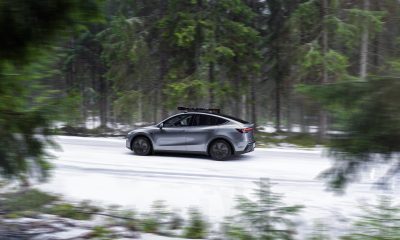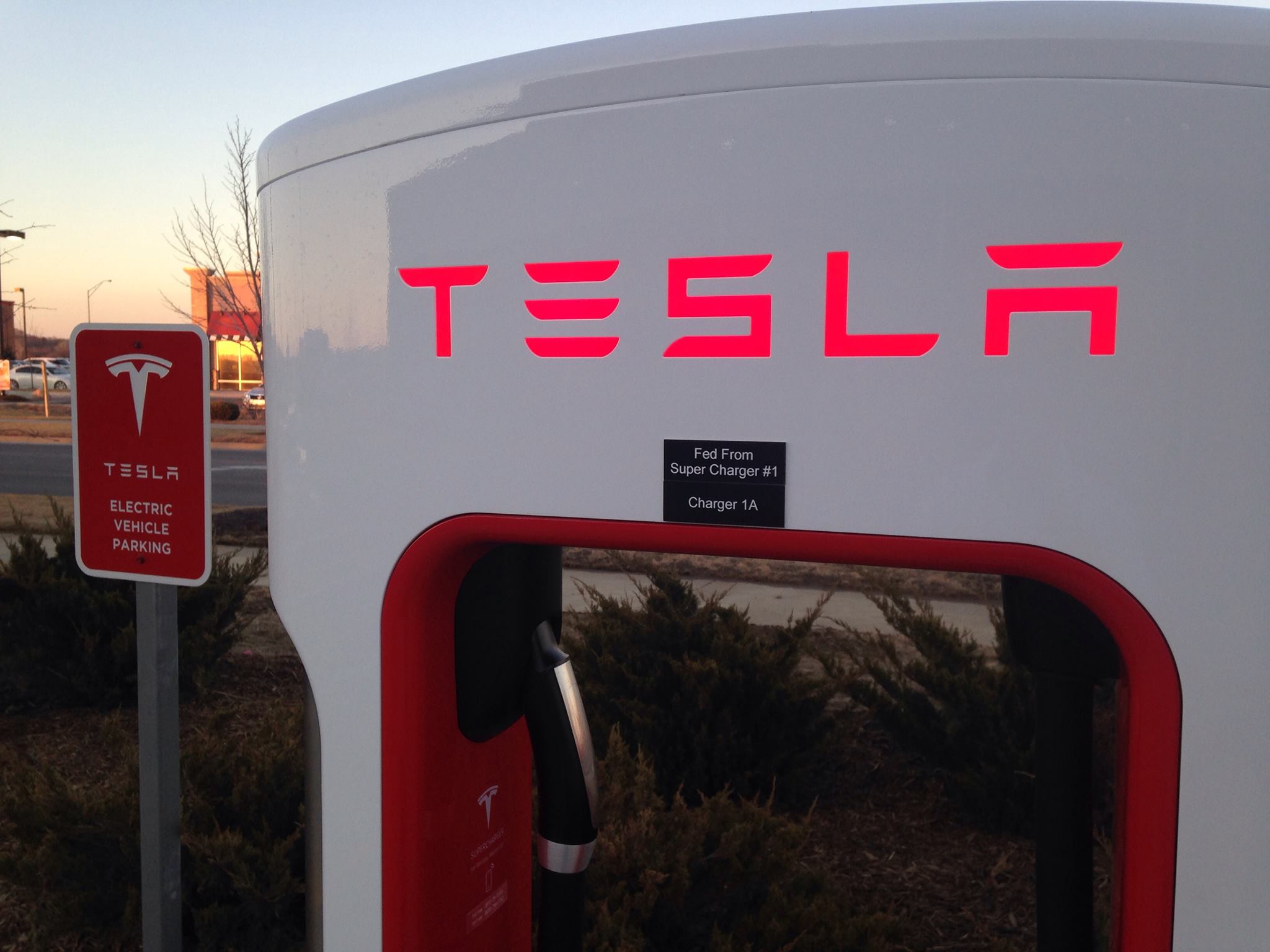

News
Tesla’s 62-stall Supercharger project in Santa Monica gains new momentum
Tesla’s 62-stall V3 Supercharger project will be a topic of discussion at this evening’s Santa Monica City Council meeting. The site of 1401 and 1421-1425 Santa Monica Boulevard was originally the planned location of Tesla’s largest V3 Supercharging station in the world. However, an Emergency Interim Zone Ordinance delayed the project. A Santa Monica City Council agenda for the March 30th meeting shows there could be a reconsideration in the Emergency Ordinance for the two lots where Tesla planned to install 62 of its fastest electric car chargers. The ordinance temporarily reserved the area for affordable housing.
On March 4th, the Santa Monica City Council chose to approve the 62-stall Tesla Supercharging station. Just days later, the City Council included the two lots that Tesla had chosen in an Emergency Interim Zoning Ordinance that reserved the land for condos and apartments. It didn’t scrap the project completely, but it would delay the Supercharging facility for a minimum of 45 days and could be extended to two years. The March 9th meeting effectively reserved unoccupied lots for prospective housing development. Tesla’s lot fit the bill, and the project lost its momentum.
Tesla’s largest V3 Supercharger facility is coming to Santa Monica
Now, revisions have been made to the Santa Monica City Council’s plan, and new areas are being considered for the affordable housing push. According to the Agenda available on the Santa Monica City Council website, the updates will be discussed at tonight’s meeting.
Instead of having housing be introduced in previously chosen areas, the City Council is now considering new regions of Santa Monica. In particular, regions that have not been used for affordable housing in the past are being considered heavily. This bodes well for Tesla’s Supercharger project on Santa Monica Boulevard because some of the listed areas in the Update show that housing could be pushed further north, several blocks away from the planned area for the V3 Supercharger lot.
The Update says:
“In order to take steps towards addressing Santa Monica’s past history of housing segregation, the Commission supported introducing housing potential, particularly affordable housing, in areas that have historically not accommodated housing, such as Montana Avenue, the Office Campus zone, and Main Street, especially on city-owned properties such as surface parking lots.”
Montana Avenue runs nearly a mile north of Santa Monica Boulevard, just south of the wealthy Brentwood neighborhood. Main Street runs along the coastline of Santa Monica and is perpendicular to Santa Monica Boulevard. The Office Campus Zone is located in several different areas, and all are several miles East of Tesla’s proposed Supercharger location.
The highlighted areas are being considered for Affordable Housing locations. Tesla’s planned V3 Supercharger location is denoted by the Tesla logo and red dot. (Map: Santa Monica Community Development Department)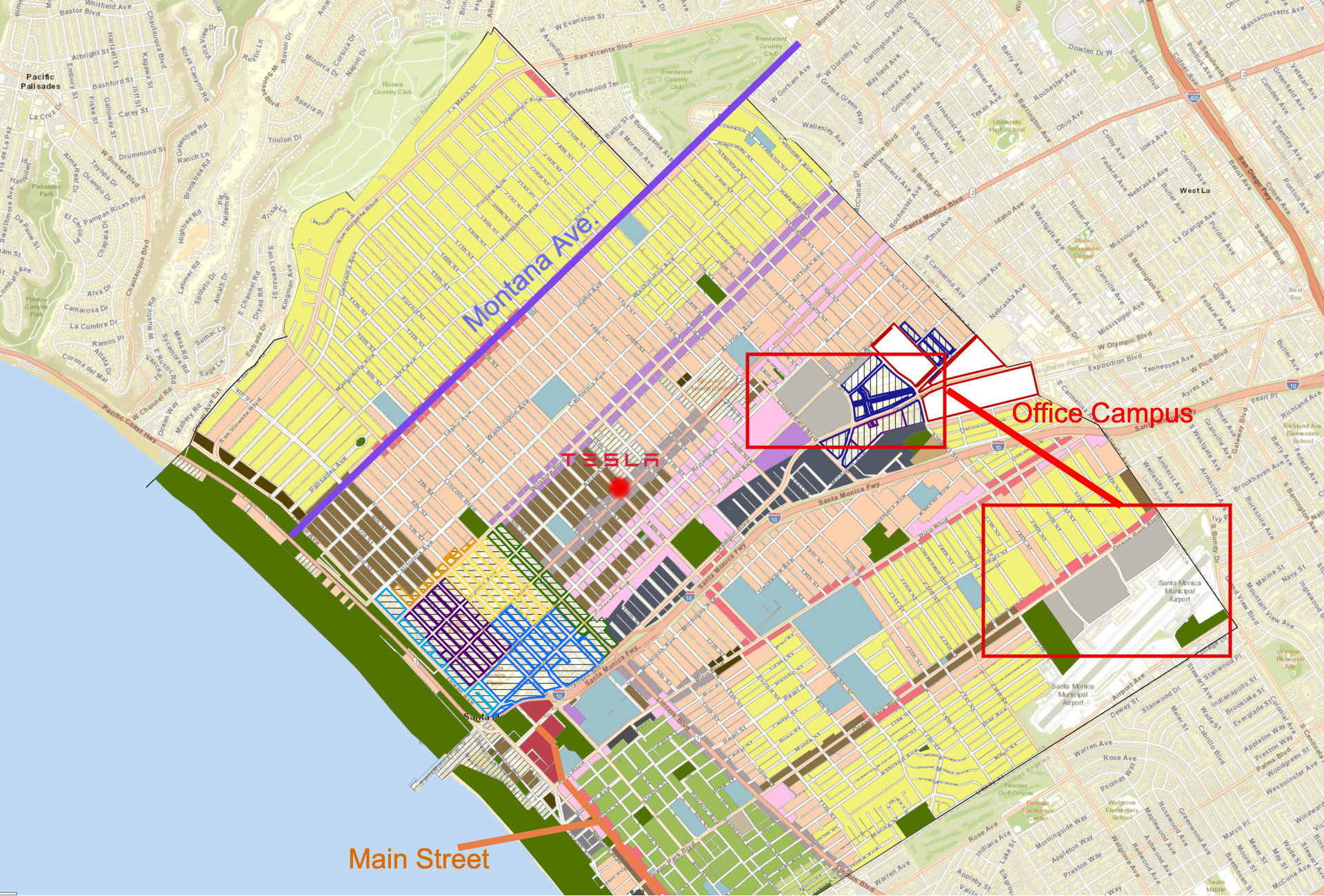
The City Council was also not supportive of introducing new housing potential in the Industrial Conservation Zone. This is denoted by the dark grey areas located about two blocks south of the planned Supercharger project. Several concerns, including historic racial inequities, existing overconcentration of affordable housing in proximity to the area, and “the need to ensure the City’s economic sustainability by retaining former industrial properties for businesses” make the area ideal for market-rate housing, but not affordable housing. Because of the Supercharger location’s proximity to the area, this bodes well for Tesla’s project, as affordable housing is already available in plentiful amounts and the City Council is more interested in moving housing opportunities to the highlighted areas.
The Update does mention that the “Commission was supportive of increasing housing potential on vacant parking lots associated with commercial uses,” but there are plenty of lots that fit those specifications in Santa Monica.
The Santa Monica City Council will hold a meeting tonight at 5:30 PM PST to discuss the new recommendations. The meeting could bring new momentum to Tesla’s Santa Monica Supercharger project if the area it has chosen is exempt from the Emergency Interim Zoning Ordinance.
The Update to the Santa Monica City Council’s Housing Recommendations is available below.
Santa Monica City Council Update by Joey Klender on Scribd
News
Tesla debuts hands-free Grok AI with update 2025.26: What you need to know
All new Tesla vehicles delivered on or after July 12, 2025, will include Grok AI out of the box

Tesla has begun rolling out Grok, an in-car conversational AI assistant developed by xAI, to eligible vehicles starting July 12. The feature marks the most direct integration yet between Elon Musk’s artificial intelligence startup and Tesla’s consumer product lineup, offering drivers hands-free access to a chat-style companion while on the road.
Grok comes pre-installed on new vehicles
According to Tesla’s FAQ page for the feature, all new vehicles delivered on or after July 12, 2025, will include Grok AI out of the box. Owners of older vehicles may gain access through an over-the-air update, provided their vehicle meets a few hardware and software requirements.
Specifically, Grok is currently only supported on Tesla models equipped with an AMD infotainment processor and running vehicle software version 2025.26 and higher. Compatible models include the Model S, Model 3, Model X, Model Y, and Cybertruck. A Premium Connectivity subscription or active Wi-Fi connection is also required.
Tesla notes that additional vehicle compatibility may arrive in future software updates.
Grok’s features and limitations for now
Drivers can engage with Grok using the App Launcher or by pressing and holding the voice command button on the steering wheel. Grok is designed to answer questions and hold conversations using natural language, offering responses tailored to its chosen personality—ranging from “Storyteller” to the more eccentric “Unhinged.”
For fun, Tesla posted a demonstration of Grok likely running on “Unhinged” talking about what it would do to Optimus when they are on a date, much to the shock of the humanoid robot’s official social media account.
It should be noted, however, that Grok cannot currently issue commands to the vehicle itself, at least for now. Traditional voice commands for tasks like climate control, navigation, or media remain separate from Grok as of writing.
The feature is being released in Beta and does not require a Grok account or xAI subscription to activate, although that policy may change over time.
Grok privacy and in-car experience
Tesla emphasizes that interactions with Grok are securely processed by xAI and not linked to a user’s Tesla account or vehicle. Conversations remain anonymous unless a user signs into Grok separately to sync their history across devices.
Tesla has also begun promoting Grok directly on its official vehicle webpages, showcasing the feature as part of its in-car experience, further highlighting the company’s increasing focus on AI and infotainment features on its all-electric vehicles.
News
Tesla cleared in Canada EV rebate investigation
Tesla has been cleared in an investigation into the company’s staggering number of EV rebate claims in Canada in January.
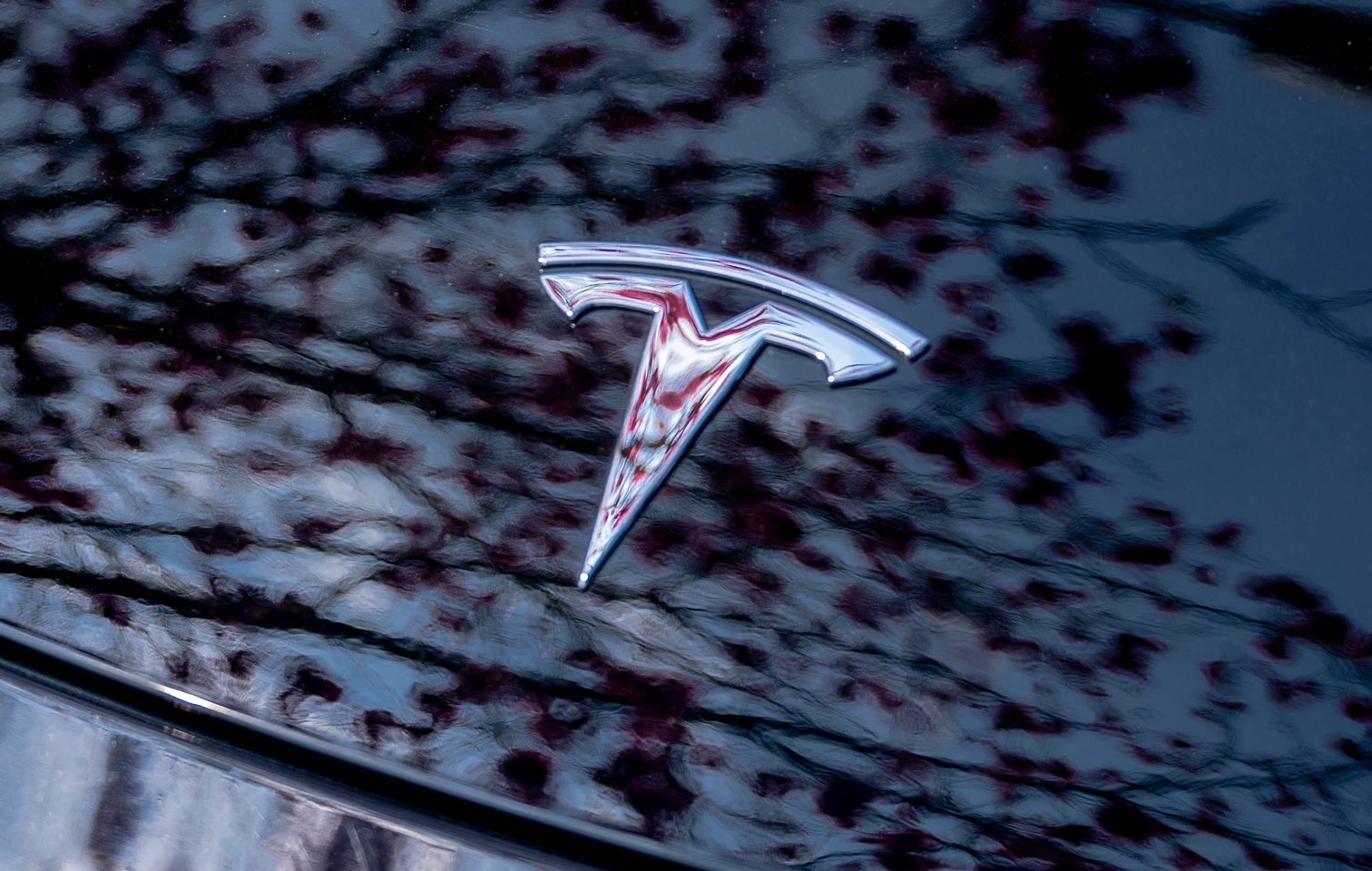
Canadian officials have cleared Tesla following an investigation into a large number of claims submitted to the country’s electric vehicle (EV) rebates earlier this year.
Transport Canada has ruled that there was no evidence of fraud after Tesla submitted 8,653 EV rebate claims for the country’s Incentives for Zero-Emission Vehicles (iZEV) program, as detailed in a report on Friday from The Globe and Mail. Despite the huge number of claims, Canadian authorities have found that the figure represented vehicles that had been delivered prior to the submission deadline for the program.
According to Transport Minister Chrystia Freeland, the claims “were determined to legitimately represent cars sold before January 12,” which was the final day for OEMs to submit these claims before the government suspended the program.
Upon initial reporting of the Tesla claims submitted in January, it was estimated that they were valued at around $43 million. In March, Freeland and Transport Canada opened the investigation into Tesla, noting that they would be freezing the rebate payments until the claims were found to be valid.
READ MORE ON ELECTRIC VEHICLES: EVs getting cleaner more quickly than expected in Europe: study
Huw Williams, Canadian Automobile Dealers Association Public Affairs Director, accepted the results of the investigation, while also questioning how Tesla knew to submit the claims that weekend, just before the program ran out.
“I think there’s a larger question as to how Tesla knew to run those through on that weekend,” Williams said. “It doesn’t appear to me that we have an investigation into any communication between Transport Canada and Tesla, between officials who may have shared information inappropriately.”
Tesla sales have been down in Canada for the first half of this year, amidst turmoil between the country and the Trump administration’s tariffs. Although Elon Musk has since stepped back from his role with the administration, a number of companies and officials in Canada were calling for a boycott of Tesla’s vehicles earlier this year, due in part to his association with Trump.
News
Tesla Semis to get 18 new Megachargers at this PepsiCo plant
PepsiCo is set to add more Tesla Semi Megachargers, this time at a facility in North Carolina.
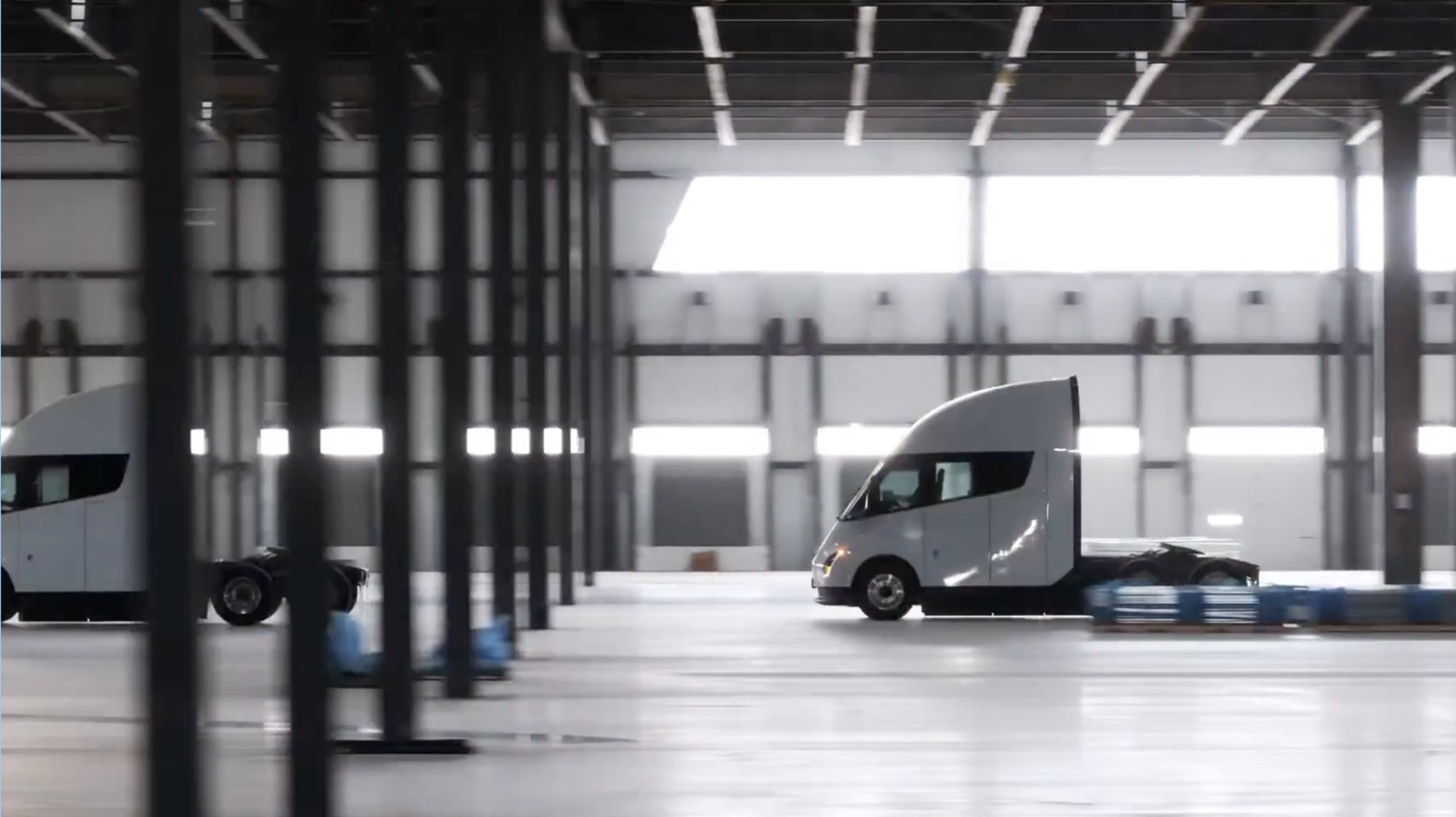
Tesla partner PepsiCo is set to build new Semi charging stations at one of its manufacturing sites, as revealed in new permitting plans shared this week.
On Friday, Tesla charging station scout MarcoRP shared plans on X for 18 Semi Megacharging stalls at PepsiCo’s facility in Charlotte, North Carolina, coming as the latest update plans for the company’s increasingly electrified fleet. The stalls are set to be built side by side, along with three Tesla Megapack grid-scale battery systems.
The plans also note the faster charging speeds for the chargers, which can charge the Class 8 Semi at speeds of up to 1MW. Tesla says that the speed can charge the Semi back to roughly 70 percent in around 30 minutes.
You can see the site plans for the PepsiCo North Carolina Megacharger below.
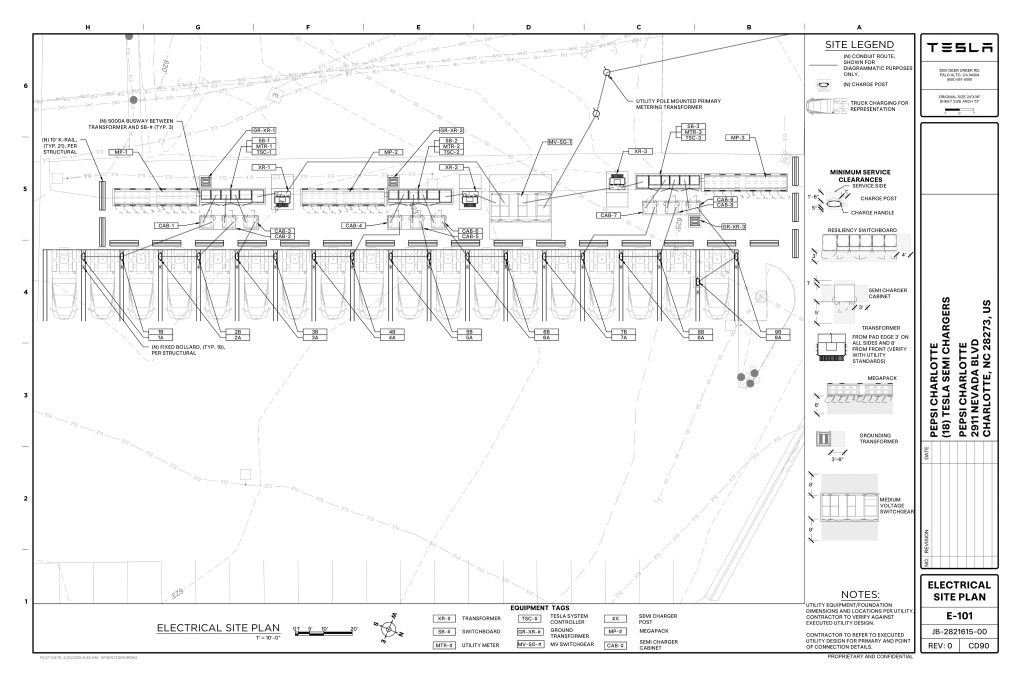
Credit: PepsiCo (via MarcoRPi1 on X)
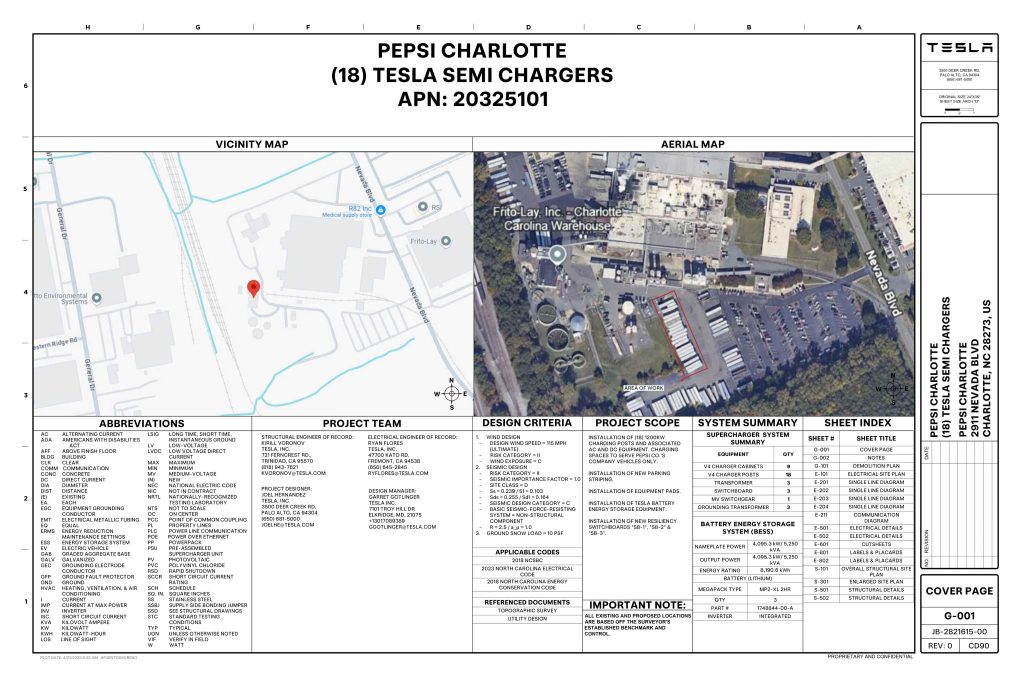
Credit: PepsiCo (via MarcoRPi1 on X)
READ MORE ON THE TESLA SEMI: Tesla to build Semi Megacharger station in Southern California
PepsiCo’s Tesla Semi fleet, other Megachargers, and initial tests and deliveries
PepsiCo was the first external customer to take delivery of Tesla’s Semis back in 2023, starting with just an initial order of 15. Since then, the company has continued to expand the fleet, recently taking delivery of an additional 50 units in California. The PepsiCo fleet was up to around 86 units as of last year, according to statements from Semi Senior Manager Dan Priestley.
Additionally, the company has similar Megachargers at its facilities in Modesto, Sacramento, and Fresno, California, and Tesla also submitted plans for approval to build 12 new Megacharging stalls in Los Angeles County.
Over the past couple of years, Tesla has also been delivering the electric Class 8 units to a number of other companies for pilot programs, and Priestley shared some results from PepsiCo’s initial Semi tests last year. Notably, the executive spoke with a handful of PepsiCo workers who said they really liked the Semi and wouldn’t plan on going back to diesel trucks.
The company is also nearing completion of a higher-volume Semi plant at its Gigafactory in Nevada, which is expected to eventually have an annual production capacity of 50,000 Semi units.
Tesla executive teases plan to further electrify supply chain
-

 Elon Musk2 weeks ago
Elon Musk2 weeks agoTesla investors will be shocked by Jim Cramer’s latest assessment
-

 Elon Musk2 days ago
Elon Musk2 days agoxAI launches Grok 4 with new $300/month SuperGrok Heavy subscription
-

 Elon Musk5 days ago
Elon Musk5 days agoElon Musk confirms Grok 4 launch on July 9 with livestream event
-

 News1 week ago
News1 week agoTesla Model 3 ranks as the safest new car in Europe for 2025, per Euro NCAP tests
-

 Elon Musk2 weeks ago
Elon Musk2 weeks agoA Tesla just delivered itself to a customer autonomously, Elon Musk confirms
-

 Elon Musk1 week ago
Elon Musk1 week agoxAI’s Memphis data center receives air permit despite community criticism
-

 News2 weeks ago
News2 weeks agoXiaomi CEO congratulates Tesla on first FSD delivery: “We have to continue learning!”
-

 Elon Musk2 weeks ago
Elon Musk2 weeks agoTesla scrambles after Musk sidekick exit, CEO takes over sales








